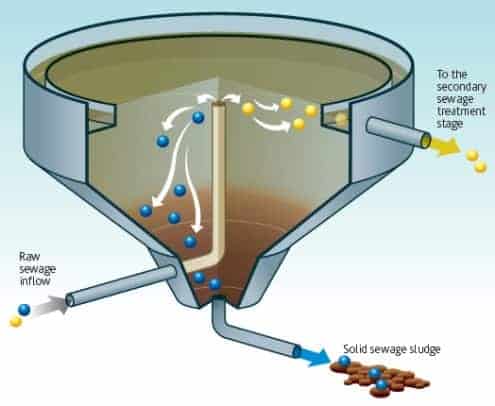
Scientists in the UK have used neutron scattering studies to develop a new way of separating silica nanoparticles from wastewater — which could prevent millions of tonnes of nanoparticles entering waterways every year.
Just a few tens of nanometres in diameter, such spheres of silica are being used in an increasing number of consumer products including cosmetics, medicines, cleaners and even food. As a result, sewage treatment plants have become a major gateway for nanoparticles entering the environment as treated effluent, sludge or both. Although there is no evidence that such nanoparticles pose an environmental threat, their ultimate fate is a mystery, because monitoring their presence in sewage has so far been impossible.
Now, scientists from the Centre for Ecology & Hydrology (CEH) and the ISIS neutron source have overcome this obstacle using small angle neutron scattering (SANS) — a technique that has been used to study a wide range of nanometre-sized structures. SANS involves firing a beam of low–energy neutrons through a sample and measuring the intensity of neutrons at small deviations from the transmitted beam.
Nanoscale problem
“Detecting nanoparticles in wastewater really is a nanoscale problem”, explains Steve King, from the ISIS neutron source. “One could use an electron microscope, but that would be very laborious, as you would be counting individual particles. Light scattering is made difficult by the background turbidity. SANS, however, is capable of resolving down to a few nanometres, and can quantify the concentration, size, shape and aggregation of the nanoparticles.”
The scientists reproduced the conditions found in a primary sewage treatment plant — microbes and all — and looked at whether the silica nanoparticles remained suspended in the liquid, or dropped into the sludge.
The team studied bare nanoparticles and some that were coated with a surfactant commonly found in consumer products. While the bare nanoparticles remained suspended, the coated particles interacted with other components of the sewage and rapidly formed a solid sludge. The researchers repeated the experiments in pure water, and found that both bare and coated particles remained dispersed.
The SANS measurements also helped the team investigate the mechanism that leads to the rapid aggregation and sedimentation of the coated particles. “Our experiments strongly suggest this must be mediated by interactions between the adsorbed surfactant molecules and organic matter in the sewage,” says King. “Other aggregation mechanisms, such as those promoted by electrolytes, act on much longer time scales.”
Designer Waste
By adding a coating that modifies that surface chemistry, it may be possible to re-route their journey Helen Jarvie, CEH
The difference in behaviour between the coated and uncoated nanoparticles means that they can be separated at primary treatment plants. This opens the possibility of controlling the environmental fate of the nanoparticles at the production stage. “Our research proves that the surface chemistry of nanoparticles influences their likely removal during primary sewage treatment,” says Helen Jarvie from the CEH. “By adding a coating that modifies that surface chemistry, it may be possible to re-route their journey through sewage treatment plants.”
Richard Owen, Chair Environmental Risk Assessment at the University of Westminster, was impressed by the work. “The authors have shown the importance of understanding the relationships between surface functionality of nanoparticles and how they behave in the natural environment and where they end up,” he says. “This is crucial if we are to develop predictive models of fate and behaviour that help us understand the risks engineered nanoparticles pose to the environment.”
Jarvie told physicsworld.com that her team plan to continue their work using SANS, by examining a wider range of nanoparticles, with different classes of surfactants.
The work is described in Environmental Science and Technology.



